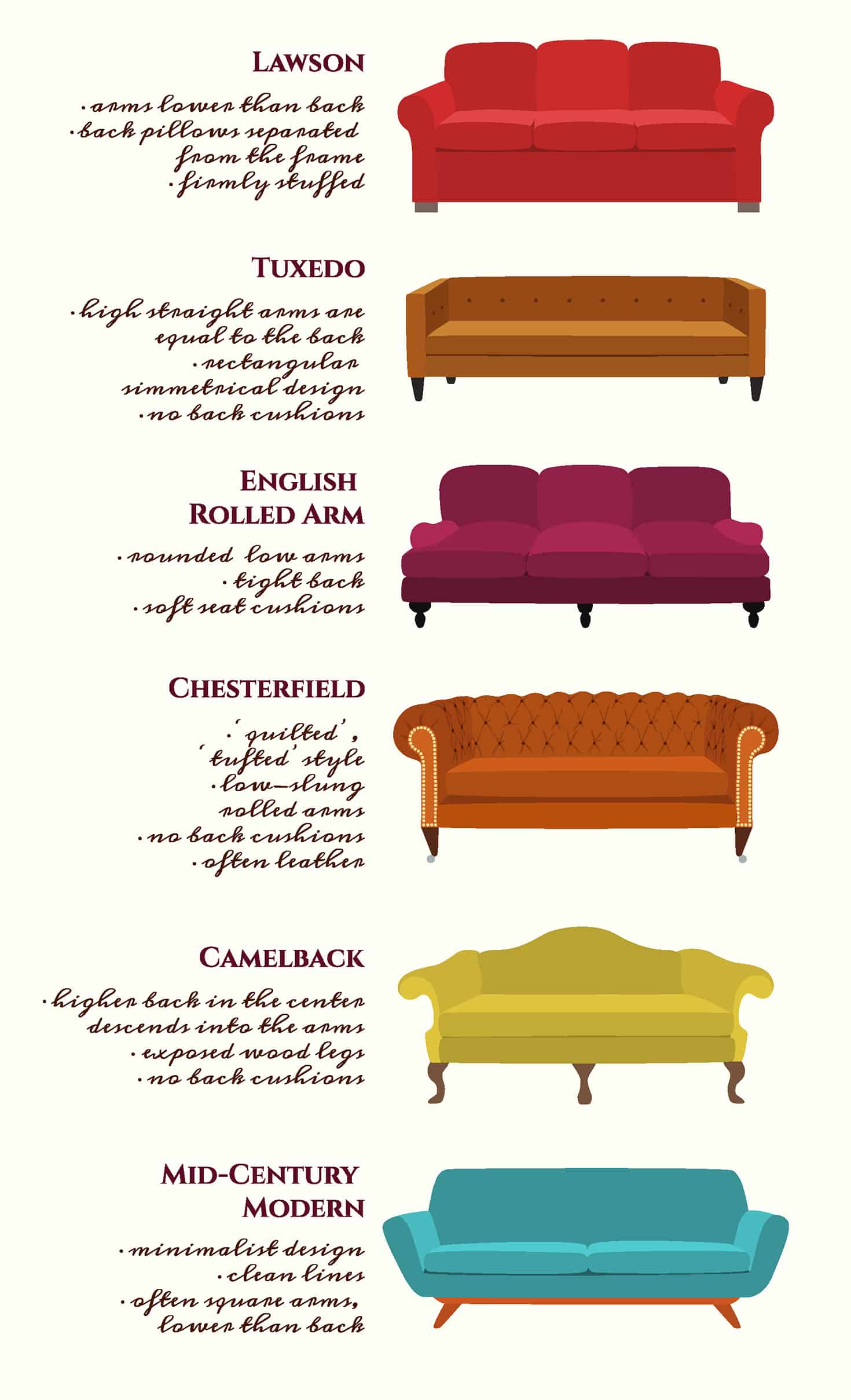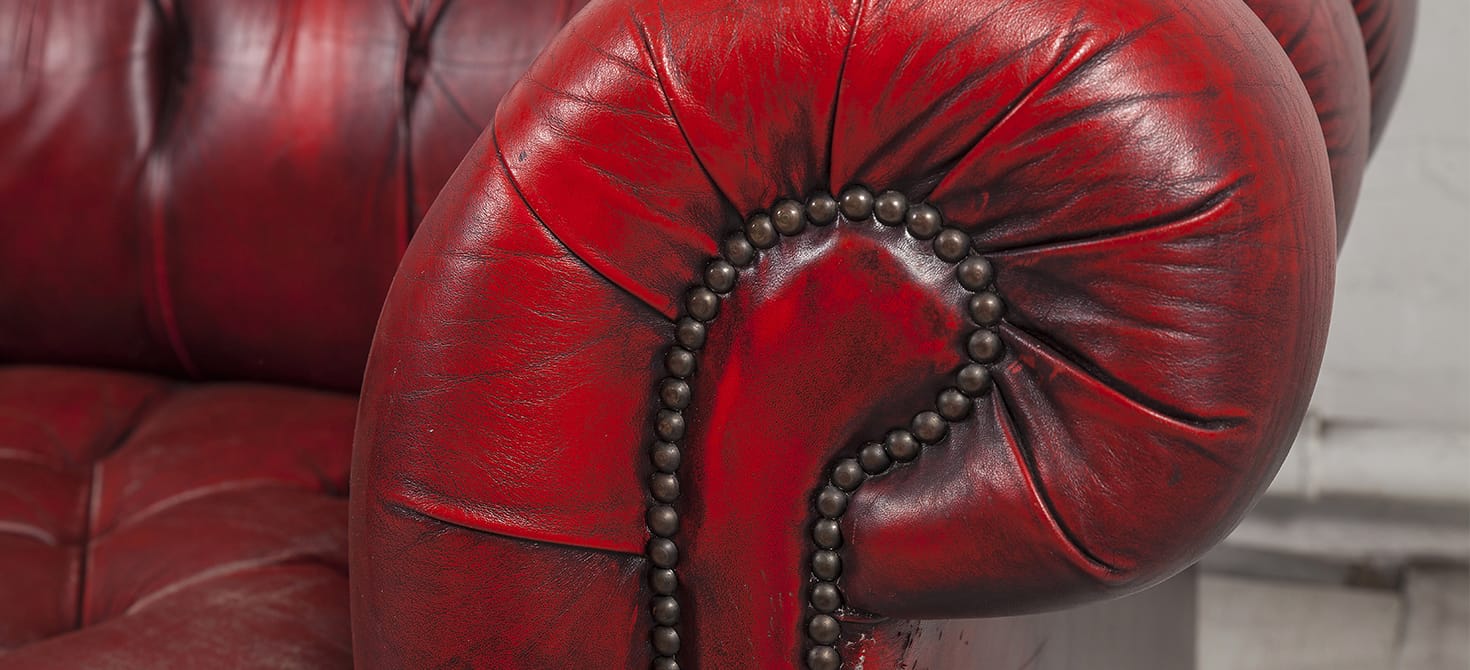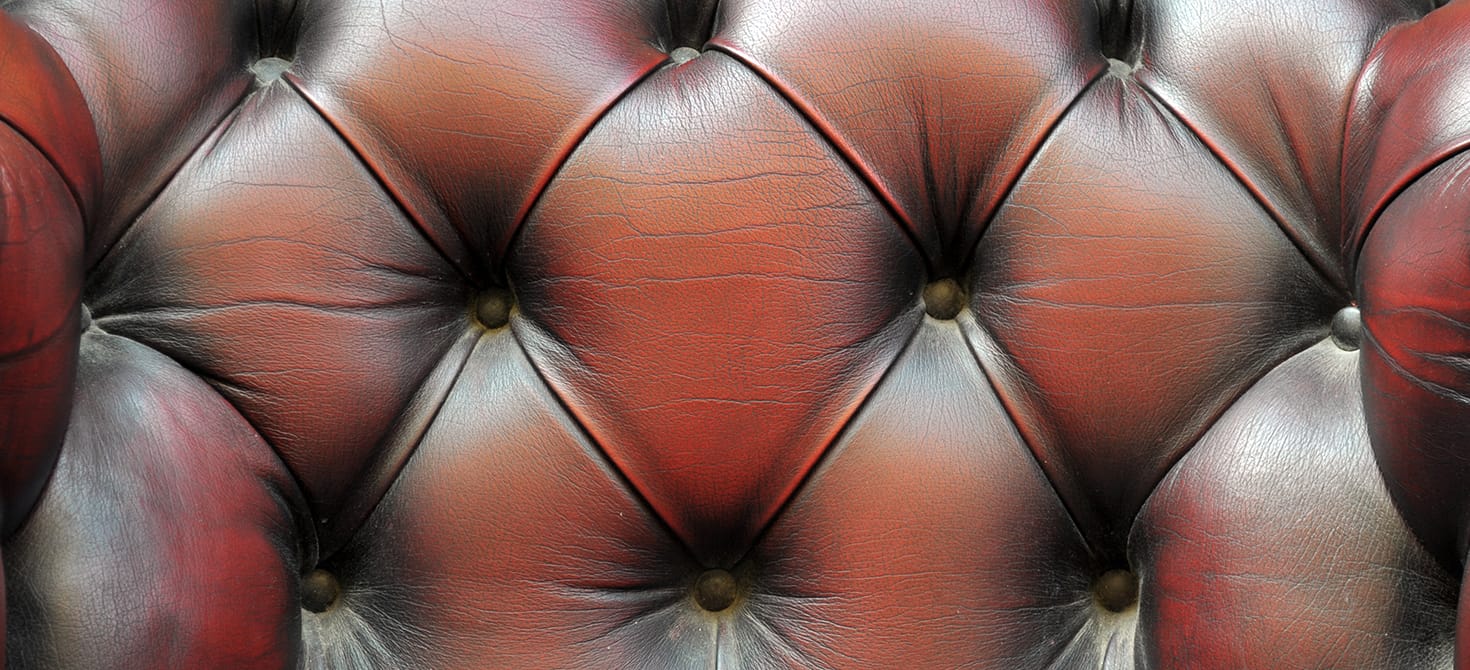- Matching furniture
- 0 likes
- 4625 views

How to choose a leather sofa? In this article we will give you some advice and suggestions on how to choose the best leather sofa to make your living room perfect.
Nowadays the leather sofa is still a very trendy piece of furniture and desired by many people. We can say that after a few years, so to speak, of triumph of fabrics, the leather sofa has once again become the protagonist in Italian living rooms.
The leather sofa is a piece of furniture that needs a lot of care and attention. Leather is in fact a material of prestigious but at the same time delicate animal origin. Let's see in the following paragraphs how to choose a comfortable, refined, elegant and quality sofa.
Index
Chesterfield, the most famous leather sofa
The Chesterfield model is certainly the most classic and famous leather sofa. This sofa model, born at the end of the eighteenth century, has become over the years a classic icon of style, thanks to its particular capitonnè workmanship: it is a particular type of padding for sofas and armchairs completely handmade and lozenge quilted. This type of quilting was born in the United Kingdom at the end of the eighteenth century and spread under the name of "Chester" or "Chesterfield".
During the seventies and eighties of the last century, this furniture became the undisputed protagonist of international salons. In recent years this leather sofa model has made a strong comeback and has once again become an important reference trend. Thanks to the reinterpretations with the temporary design, the Chesterfield model is back in fashion: today the soft and abundant lines have given way to much more minimal and dry seating.
Elegant and very comfortable Chesterfield sofas give the interior an unmistakable touch of elegance and representation, thanks to the characteristic brown colour that can be combined with any type of style: modern: boho chic, industrial, jungle, Nordic, etc.. The Chesterfield leather sofas are, according to many, the most beautiful sofas ever.
To make your rooms truly unique, here is the most successful modern reinterpretation of a Chesterfield sofa able to meet the highest standards of style and quality of materials with which it was made.

Chesterfield sofa, afraid of ruining it?
Some people are discouraged from buying a Chesterfield style sofa because of the fear of easily ruining and deteriorating the furniture. For many people the leather sofa is an overly delicate piece of furniture, which without the right attention will easily deteriorate.
In this regard, we would like to deny and immediately unmask this stereotype, simply saying that a leather sofa tends to increase its charm with the ageing of the leather it is made of.
Cleaning a leather sofa is a very simple and quick operation. For those who would like to learn more about this subject, please refer to our guide on how to clean a leather sofa.

Leather sofa: tips and suggestions for purchase
Below we would like to give you further advice and suggestions to choose the best leather sofa to prepare in your living room. The leather sofa, as specified in the previous paragraphs, is undoubtedly still very much appreciated in 2020.
Obviously over the years trends and fashions have outlined changes in lines and colours, sometimes drastic and particularly eclectic. However, we can say that the stylistic and aesthetic identity of a leather sofa remains almost unchanged, just like its timeless charm.
So how do you choose a leather sofa that is able to enhance your environment and meet your stylistic needs? In order to choose a quality leather sofa it is first of all necessary to appreciate the characteristics and peculiarities of leather: the latter is a material that makes it unique.
Characteristics and peculiarities of sofa leather
The material with which a leather sofa is made is cut, worked and sewn, and then covered the surface of the sofa. Every leather sofa can never and in no way be the same as another.
From a roll of fabric it is possible to make many sofas, all equal to each other. With leather the matter is totally different: to produce a leather sofa you need 4 or 5 whole cowhide leathers, for a total surface of about 20 square metres. From what has been stated it is easy to understand how each leather sofa is in fact a unique model.
Never forget that the leather of your sofa is a natural upholstery, since it comes directly from animal skins. For this reason the conformity of the material derives mainly from the type of animal used: very interesting is the fact that even simply the habitat in which the animal lives and the food it consumes are able to influence the characteristics of the leather.
The leather of a sofa is also in continuous transformation and therefore subject to constant mutations over time. A typical change in the leather of a sofa is the shine of the section of furniture on which you sit or the softening of the leather on the backrest area.
All these aspects that characterise the natural material with which the sofas are made must be taken into consideration in advance, before the furniture is purchased.

Leather sofa: which leather to choose?
Which leather to choose for your sofa? Obviously not all the leathers used to make sofas have the same characteristics. The leather used to make sofas is classified according to the thickness, the quality of the raw material and again according to the processes carried out, the colours and, lastly, the treatments used to make the finishes.
According to the different characteristics of the leather, the price of the finished product will change.
Leather classification for sofas
The classification of hides used for the manufacture of sofas begins with the most valuable quality: the grain or half grain leather is the outermost layer of the leather, on which the pores of the animal's skin are visible.
The grain or half grain leather is extremely resistant and at the same time particularly soft. This type of leather is able to preserve itself and resist for a long time. Grain leathers are generally accompanied by a guarantee certificate attesting to their high quality.
In terms of quality, we then have printed or natural grain leather. The leather of a sofa can be left as nature creates it or alternatively printed. Printed leather is also referred to in technical jargon as corrected leather. There are more or less deep corrected leathers on the market: the design proposed by these leathers is called Madras or dollar print. The main characteristic of printed leather is its uniformity: during the phases of the pressing and printing process, the whole surface of the leather undergoes compression.
Only the best cuts are used on the market for the sale of natural grain leathers. Obviously, although a leather may meet high quality standards, this does not mean that it is free from defects: even on a quality leather there may be, for example, the sign of a scar, or even a small imperfection due, for example, to an insect bite. These small defects should not be considered as such and do not affect the quality of the sofa; on the contrary, we could say that they represent the beauty of the furniture.
Continuing the classification of leathers used for the production of sofas we have the nubuck leathers: on this type of leather is also maintained the superficial part of the animal's hair, obviously shaved with care. Nubuck leather is a very soft and precious quality but at the same time extremely delicate. For this reason some models of sofas made with the help of this type of leather undergo a series of specific treatments in advance, aimed at protecting the surface of the leather itself.
And again we have the split leather that represents the lower part of the animal's skin, that is, the one placed respectively in the inner part of the dermis. Split leather is certainly less valuable than grain leather.
Finally, we have regenerated leather: this is a type of covering made with the help of a mix of waste leather and other mixed compounds. For the production of the regenerated leather, the processing is very similar in nature to that carried out for paper. Regenerated leather, just like fake leather, is not able to preserve itself for a long time, deteriorating inexorably.


